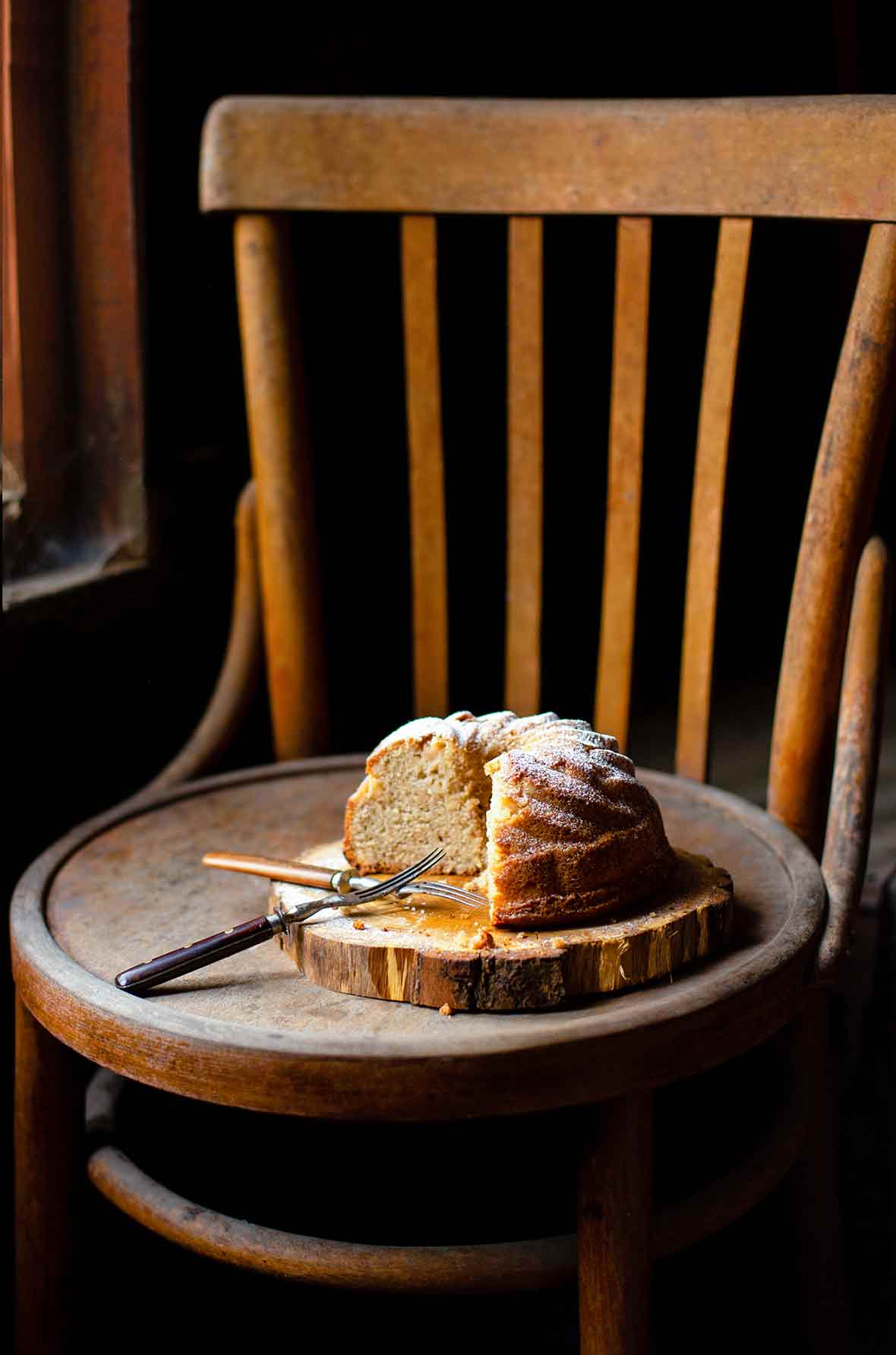
Saint Phanourios (pronounced “fan-OO-ree-os”) is to the Greek Orthodox what Saint Anthony is to the Catholics: the patron saint of lost things. But here’s the twist: this saint has a sweet tooth. Greeks bake, bless, and give away this humble nut-and-spice cake, also called a phanouropita, in return for the saint’s help to find something that’s missing. During my own year-long quest with the phanouropita, a friend’s grandmother showed me how to make the following version of this traditional Greek cake, which she likes to enjoy with morning coffee. Of the many recipes I’ve tried, it’s my favorite, because it’s so forgiving. The batter is easy to make by hand, and it’s all about proportions, which means you can use any reasonable measure (a coffee cup or drinking glass) in place of a standard cup. To my mind, the recipe’s looseness perfectly captures the spirit of Greek home cooking and offsets the formality suggested by Church and Saint. It also adheres to the traditional nine ingredients. (If you cheat just a little and count the cinnamon and cloves together as spices.) One unbreakable rule: Before you begin, take a moment to think of something you’d like Saint Phanourios to help you find—keep this in mind as you make the cake. If you’d like some divine company in the kitchen, print this image of the icon of Saint Phanourios and keep it within sight as you make the cake. Be warned, though—this alone won’t bring you what you seek. Sincerity is everything when conversing with a saint.–Allison Parker
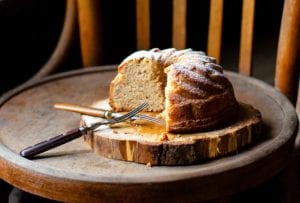
Saint Phanourios’s Cake
Ingredients
- 1 cup vegetable oil, plus more for greasing
- 1 cup fresh orange juice, (from about 3 oranges)
- 1/2 cup brandy
- 1 cup sugar
- 1 cup chopped walnuts
- 4 cups all-purpose flour, plus more for dusting
- 1 1/2 teaspoons baking soda
- 1 1/2 teaspoons baking powder
- 1 1/2 teaspoons ground cinnamon
- 1/4 teaspoon ground cloves
- Confectioners sugar, for dusting (optional)
Instructions
- Preheat the oven to 375°F (190°C) and adjust an oven rack to the middle position. Oil the bottom and sides of a 9-inch round cake pan or a Bundt or loaf pan of equal volume. Dust the pan with flour, tap out any excess, and set aside.
- In a large bowl, whisk together the oil, orange juice, brandy, and sugar until thoroughly combined. Mix in the chopped walnuts.
- In a medium bowl, combine the flour, baking soda, baking powder, cinnamon, and cloves. In small batches, add the flour mixture to the brandy mixture, whisking vigorously as you go. Continue whisking until completely combined. Tradition dictates that you're supposed to whisk for 9 minutes by hand.
- Scrape the batter into the prepared pan. Before putting the cake into the oven, pause to say whatever kind of prayer you feel comfortable with as you focus on the thing you hope to find. (Greek Orthodox women always make the sign of the cross, but the cake won't suffer if you skip this step.)
☞ TESTER TIP: The batter will be very thick and slightly gummy—not to worry. And if it seems impossibly thick, you can always splash in another tablespoon of brandy.
- Bake the cake until the top looks hard and golden brown and a toothpick inserted in the center comes out clean, about 40 minutes.
- Let the cake cool in the pan for 5 minutes and then remove the cake and let it cool completely on a wire rack.
- Traditionally, the cake is given away whole or cut into 9 pieces and shared with others. If you're serving the cake at home, you may want to sift a little confectioners' sugar over the top before slicing. The cake dries out easily, so if you do cut into it, make sure to wrap any leftovers well, first in plastic wrap and then in foil, or store in an airtight container.

An LC Original
View More Original RecipesNutrition
Nutrition information is automatically calculated, so should only be used as an approximation.
Recipe Testers’ Reviews
Hardly anything can go wrong while preparing this cake. The method is very simple, just mix the liquid and solid ingredients separately and then join them together. Although tradition says they should be mixed for 9 minutes, the magic number associated with the preparation of this cake dedicated to Saint Phanourios, my arm couldn’t take that long. But the result was very good: a soft cake with a strong flavor and a balanced sweetness.
Great accompaniment for a cup of coffee for breakfast!
Notes:
1. Makes one 23 cm cake.
2. Hands-on time: 25 min / Total time: 1 h 10 min
3. I used just the amount of brandy on the recipe
4. It took 40 minutes to bake
It may sound strange, but I did not hold out a lot of hope for this recipe. As a result I was very pleasantly surprised.
The recipe is easy to follow and doesn’t even require me to climb up and retrieve the mixer from the cabinet. (I’m short. Most rooms in my house contain at least one step stool.) I did take one liberty with the recipe; whisking the batter for 9 minutes was beyond my inclinations. By the time it was thoroughly mixed, I had been whisking for about 5 minutes, so I said an extra prayer and left it at that. To me, the batter wasn’t particularly either stiff or gummy, but at that point I may have tested the brandy a little more than I should have.
Baking was just under 40 minutes and the result was a cake that was perfect for having with my breakfast coffee the following morning. I made my version in a loaf pan and properly sliced it into 9 slices.
In case anyone is curious, my lost item has yet to appear. I tend to suspect my kleptomaniac cat had a hand (paw?) in its disappearance, in which case it will make a reappearance whenever I find his current stash. Plus I’m not sure how long to give the saint. 24 hours? 48 hours?
At least I got a nice coffee cake recipe out of the experience. And I lose a lot of things, so it may yet provide another bonus.
This cake fits into a comforting tradition of walnut cakes in Greek food, although I was not familiar with this particular Lenten version of cake, nor was I versed in the story of Saint Phanourios (Fanourios). I also liked the simplicity of hand mixing and having a bit to serve with coffee, a tradition of hospitality I love.
I made this cake using a neutral oil (avocado) but absolutely would try it with part or all olive oil the next time I make it, and perhaps a bit less flour to help it stay moist. Also, I would zest the oranges before squeezing for juice, and add them to the batter. The spicing is good but you could easily increase or double the cinnamon, and freshly ground clove is perfect at the amount suggested.
I think greasing the pan might work better with coconut oil (especially if using a Bundt pan with detail design), NOT melted, so no oil would pool at the ridges of the pan and collect too much flour. If you use vegetable oil, do it at the last moment so oil doesn’t start moving before you get the flour dusted.
All said, the flavor of the cake is lovely, simple, and, if wrapped tightly and stored in a closed container, will not change dramatically over several days. I gave away some and divided the remainder, putting some aside in the freezer for when we want a bit of not-too sweet cake to go with coffee or maybe a bit of Metaxa after dinner.
Use the best walnuts you can (I like the blondish Chandlers), make your own wish or prayer, and serve to those you love.
You can divide it into 9 slices, but in truth this serves 12 plus easily.
Even after 5 days (don’t judge me—cake is handy when the power is out) the cake is yummy. I will make it again for my mother, and add the orange zest, use olive oil, a touch less flour, and enjoy it again! Also, while I am at it, I might use Metaxa (which is a blend of brandy and grape juice) in place of the brandy. That will be a 10.
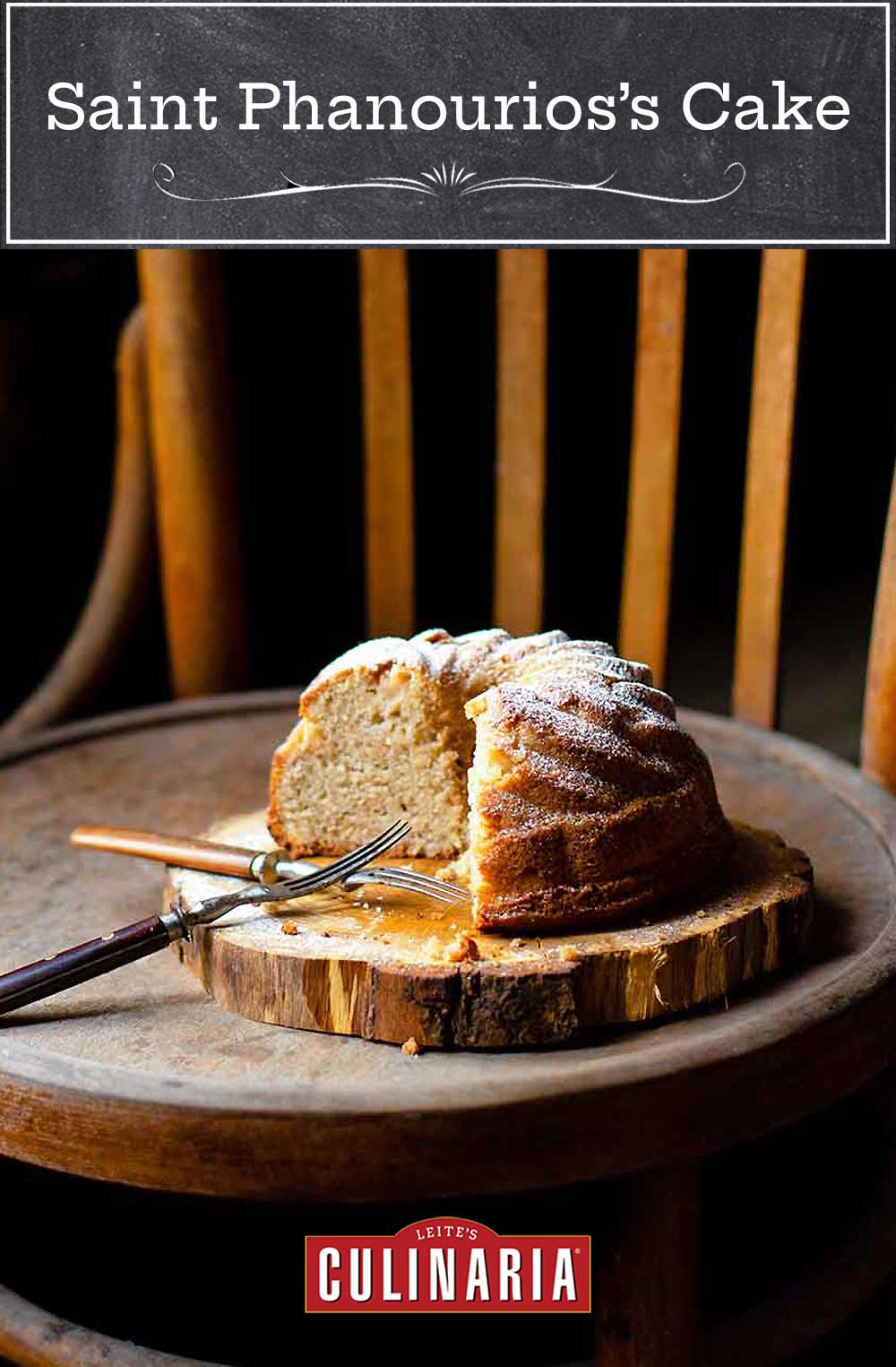



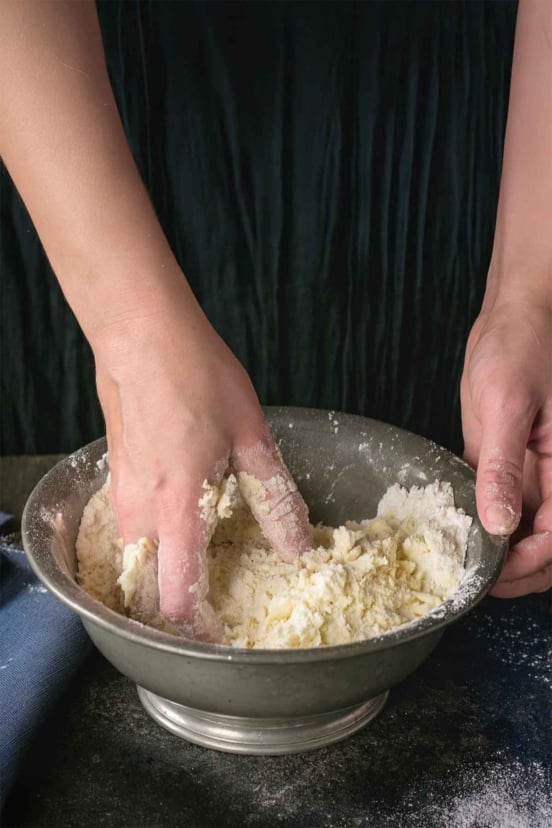
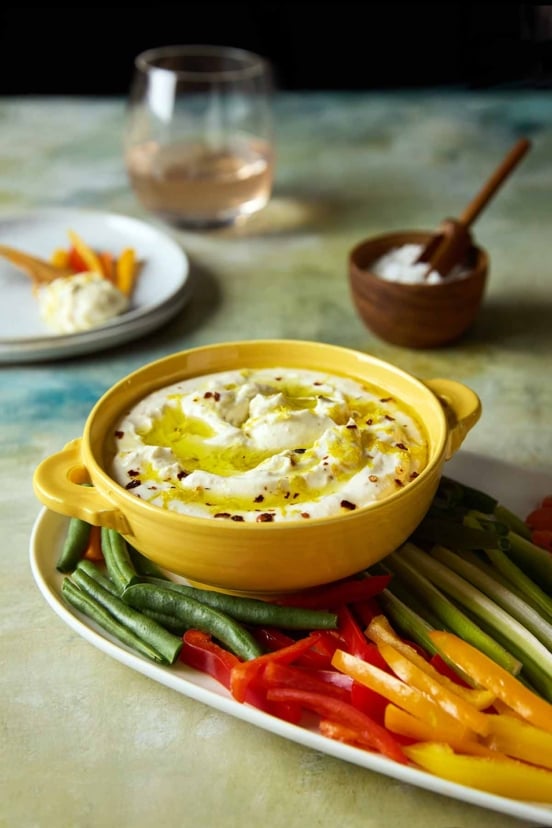









Dear Allison, I am writing to you from an Orthodox Convent. I really enjoyed reading your article and for the first time in my life am sending a comment via the internet because I felt it would be great to share this with you as well.
The Patron Saint of our Candleshop is St. Phanurius. Several years ago we printed a booklet–The Life and Miracles of St. Phanurius–which also includes a canon of supplication to him. (We made a humble attempt at a matching CD so that people could learn how to chant it.) Back then we printed 1,000 copies and they sold out very quickly, but for years we were not able to reprint it due to lack of time. Just today, thank God, we were able to send to the typesetters Volume II, which includes the forty accounts of Volume I and over 40 more. These are all true stories, written in the first person, of how St. Phanurius helped various people from all over to find what they had lost or needed to find–and yes, tangibles and non-tangibles alike. We would love to send you a copy as a gift when it comes from the printers, which we are hoping won’t be too far down the road. If you want to let us know how we can do that, that would be great. There is a link to contact us through our website. God be with you and may St. Phanurius always guide you!
Mother Thecla and Sisters
Dear Mother Thecla,
I am deeply honored that you would be moved to send a comment via the Internet, for the first time ever, because of my article. And incredibly touched that you’d offer me a copy of your own “True Stories” collected in your new volume. I would love to read these accounts. I will certainly be in touch—not only to arrange that, but to express even more personally to you my gratitude. Thank you for your blessings.
Dear Allison, Thanks for your reply, we were very happy to hear from you and we look forward to that other communication you mentioned. Can you please also tell us where you got that beautiful icon of St. Phanurius? God Bless! Mother Thecla and Sisters
Dear Mother Thecla, you are welcome. For the icon of St. Phanourios, I’ll have to retrace my steps and get back to you on its origin. I’ll be sure to let you know. Blessings back to you and the sisters. ~ Allison
Dear Allison, Here we are, almost 11 years later. I was so glad that St. Phanurius helped me to find you here again today, and even pick up where we left off. The book is, at long last, at the printers. The Monastery in Boston, which will be the main distributor, will hopefully have them by mid-July. I no longer have your mailing address. Please somehow let me know how I can get a copy to you, which I will do with great joy. God bless!
Mother,
Thecla
Dear Mother Thecla,
How wonderful to hear from you again after so long… Phanourios is kind indeed to re-connect us! 🙂 Congratulations on the book’s progress. I would be so thrilled to have a copy, or even just to continue our correspondence privately. If email is OK, you could get in touch with me through the “contact” page on the following: acparker … it’s “dot com” at the end. The form on the site would get an email to me and then I could share an address with you. I hope that works. All blessings to you and all in the community,
Allison
Hello Mother Thecia, the icon came from this Romanian site. Hope this helps.
Hello, Mother Thecla. Just wanted to say that I received your email… hopefully you saw mine back to you directly, which included an address. Thank you, thanks to our saint for watching over our connection, and thanks as always to the wonderful David Leite for the place and person making this article — and all delicious things Leite’s Culinaria — possible. 🙂
-Allison
Would appreciate any guidance on the brandy. Probably you don’t call for well-aged Hennessy from France 🙂 but there are just all kinds out there, so thought it might be worth asking, thanks in advance.
Hi, Chris. Thanks for posting your question. Given my love of authenticity, and my own Greek heritage, I have only ever used Metaxa in this cake–and not the Reserve range, either. I keep a bottle of the 5-Star Metaxa on hand, and I think you’d have no trouble finding that in a local liquor store. Expect to pay around $30/bottle.
As for other options…. well, no one’s going to stop you from tossing in your VSOP or XO Imperial, of course, but it seems we both agree that might be better in a glass alongside your cake, rather than in it. 🙂
As a gift to my boyfriend’s parents, I made my first St. Phanourios two nights ago. We sliced into it last night and it was fascinating – such an aromatic, dense cake, not too sweet, not too heavy. I’m 1/4 Greek and come from a family that makes tiropita and saganaki for every holiday meal, so having a dessert in my recipe Rolodex is such a treat, especially one with such an interesting history. Thinking about my figurative “lost thing” while making this cake marked the first time that I was moved while baking, and sharing a cake with such a story made it so much more meaningful. That is something that I love about our culture – there is a purpose for everything, which is probably why the food is so good and nourishing. Thank you for sharing this!
Dear Zoe,
Your message is a huge gift to me, right before the Christmas holiday. Thanks so much for not only placing your trust in Leite’s and this recipe by making the cake, but also taking the time to think about the story and intentions behind the cake and to leave a comment. Also, I am so honored that you’d make this as a gift for your boyfriend’s parents. I agree, a sense of purpose sure can go a long way toward nourishment—as can community and sharing.
Again, thank you so much for taking the time to comment. May you and all in your circle have a lovely holiday season and an inspired, delicious new year.